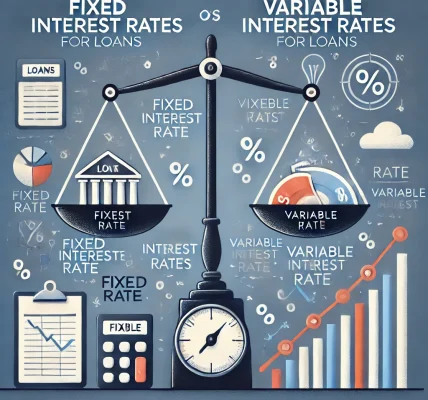Introduction
Government regulations play a crucial role in shaping loan policies, ensuring stability, protecting consumers, and managing risks in the financial sector. In 2024, regulatory frameworks continue to evolve in response to economic conditions, financial risks, and technological advancements. Understanding these regulations is essential for both borrowers and financial institutions.
This blog explores the impact of government regulations on loan policies in 2024, covering key legislative changes, their effects on lending institutions, and what borrowers need to know.
Key Government Regulations Affecting Loan Policies in 2024
1. Stricter Consumer Protection Laws
To prevent predatory lending and unfair loan terms, governments worldwide have introduced stricter consumer protection laws. Key aspects include:
- Transparent Loan Terms: Lenders must clearly disclose all terms, including interest rates, fees, and penalties.
- Fair Lending Practices: Institutions cannot discriminate based on race, gender, or socioeconomic status.
- Caps on Interest Rates: Some jurisdictions have set maximum interest rates to prevent excessive borrower exploitation.
2. Changes in Central Bank Monetary Policies
Central banks, such as the Federal Reserve and the European Central Bank, influence loan policies by adjusting interest rates and monetary policies. In 2024:
- Higher interest rates aim to control inflation, making borrowing more expensive.
- Tighter liquidity measures may lead to stricter loan approval criteria.
- Variable interest loans could see fluctuations in repayment amounts.
3. Enhanced Risk Assessment Requirements
To mitigate financial instability, regulators have enforced stricter risk assessment policies for lenders, including:
- Stronger Credit Evaluation: More emphasis on credit scores, income stability, and debt-to-income ratios.
- AI and Big Data Usage: Banks are adopting AI-driven risk models for better loan decision-making.
- Increased Scrutiny on High-Risk Loans: Business and personal loans for volatile industries may face stricter requirements.
4. New Mortgage and Housing Loan Regulations
The housing market remains a critical focus for policymakers. In 2024:
- Stricter Mortgage Eligibility: Higher down payment requirements and lower debt-to-income ratio limits.
- Government-Backed Loans Expansion: More incentives for first-time homebuyers and low-income borrowers.
- Sustainable Lending Practices: Regulations promoting green mortgages and energy-efficient housing loans.
5. Digital Lending and Fintech Regulations
With the rise of digital banking and fintech lending platforms, governments have introduced new regulations to ensure fair practices:
- Licensing and Compliance: Fintech lenders must adhere to the same regulatory standards as traditional banks.
- Data Privacy Protections: Stronger enforcement of data security and customer privacy laws.
- Fraud Prevention Measures: Enhanced AI-powered monitoring systems to prevent financial fraud and identity theft.
How These Regulations Impact Borrowers
1. Increased Loan Approval Scrutiny
Due to stricter risk assessment and regulatory requirements, borrowers may experience:
- Longer loan processing times.
- Higher documentation requirements.
- Greater difficulty securing high-risk loans.
2. Fluctuations in Interest Rates
Government-controlled interest rates directly impact:
- Mortgage rates, affecting home affordability.
- Business loan costs, influencing expansion and investments.
- Personal loan affordability, especially for those with lower credit scores.
3. Enhanced Consumer Rights
Regulatory changes provide greater consumer protection, ensuring:
- Clear loan terms and conditions.
- Fair lending practices and no hidden fees.
- Legal recourse for fraudulent or unfair lending practices.
How These Regulations Affect Financial Institutions
1. Higher Compliance Costs
Financial institutions must invest more in:
- Legal teams to ensure regulatory compliance.
- Advanced technology for risk assessment and fraud prevention.
- Employee training programs on evolving regulations.
2. Adjustments in Lending Strategies
Banks and lenders may:
- Reduce lending in high-risk sectors.
- Focus on government-backed loan programs.
- Increase partnerships with fintech companies for compliance-efficient lending.
3. Innovation in Loan Products
To comply with regulations while maintaining profitability, financial institutions are:
- Offering customized loan products with flexible repayment terms.
- Introducing eco-friendly financing options.
- Expanding digital banking and automated loan approval systems.
Conclusion
Government regulations in 2024 are significantly shaping loan policies to promote transparency, financial stability, and consumer protection. While borrowers may face stricter approval processes, they also benefit from fairer loan terms and enhanced security. Financial institutions must navigate these regulatory changes by adopting innovative, compliant lending practices.




